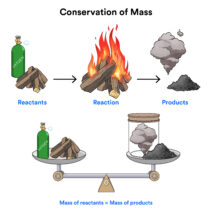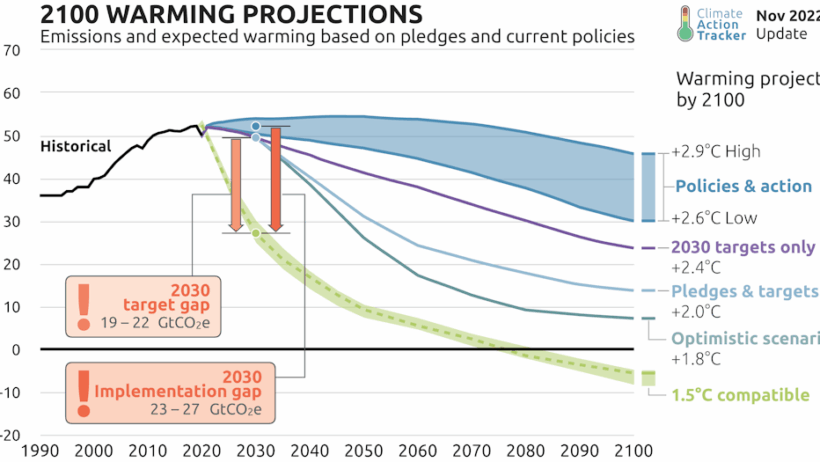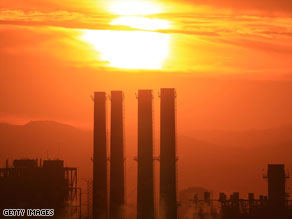The specter of climate change looms large over the horizon of humanity’s future, a tempest that threatens to unleash unprecedented devastation. The Paris Agreement established a pivotal yet daunting goal: limit global warming to 1.5°C above pre-industrial levels. Achieving this target is akin to navigating a fragile ship through a stormy sea, where every decision could either avert disaster or plunge us into chaos. Understanding the intricate implications of this challenge is vital as we chart our course towards a sustainable future.
The fingerprint of human activity is irrefutably etched into the climate change narrative. Our reliance on fossil fuels, deforestation, and industrial processes has led to a staggering increase in greenhouse gas concentrations in the atmosphere. Carbon dioxide levels, for instance, are at their highest in over 800,000 years. This precipitous rise has initiated a cascade of environmental changes, each ripple magnifying the urgency of the crisis. Should the global temperature rise beyond 1.5°C, we risk breaching critical tipping points, unleashing a host of cataclysmic events – from severe droughts to insatiable floods, intensifying heatwaves, and the potential displacement of millions.
To grasp the significance of limiting warming to 1.5°C, we must first delve into the hypothetical outcomes of surpassing this threshold. Policymakers have warned that a rise of 2°C could result in a world markedly different from today. Coral reefs, vital ecosystems that support diverse marine life, could face annihilation, with a projected 99% of coral dying at a 2°C increase. Such a loss would reverberate through global food webs, affecting communities that rely on fish for sustenance and economic stability.
Conversely, a trajectory that maintains the temperature increase to 1.5°C engenders a more optimistic future, allowing many ecosystems the chance to adapt. The fate of polar ice caps, for example, hinges on our ability to curb emissions. Maintaining current levels may provide regressional time for these frozen titans, preserving biodiversity and the delicate balance of climate systems. However, this is not merely an environmental issue; it is a social one, steeped in equity and justice. The most vulnerable populations, often contributing least to climate change, disproportionately bear its brunt.
The pathway to limiting global warming is lined with challenges, yet it also brims with opportunity. Transformative action in sectors such as energy, transportation, agriculture, and urban planning is paramount. Transitioning to renewable energy sources like solar, wind, and hydroelectric power can significantly mitigate emissions, allowing humanity to harness nature’s inexhaustible potential. Such initiatives are not mere hypotheticals; nations like Denmark and Germany have demonstrated the viability of ambitious renewable energy targets.
Equally critical is the reimagining of our agricultural systems. Presently, industrial agriculture contributes a staggering share of global emissions. Regenerative practices, including agroforestry and organic farming, not only enhance resilience but also sequester carbon in the soil. This shift reflects an age-old understanding that sustainability need not compromise productivity. Rather, it can enhance the symbiotic relationship between humanity and nature, fostering a paradigm that prioritizes stewardship over exploitation.
Moreover, the role of technology in this climate saga cannot be overstated. Innovations such as carbon capture and storage (CCS) hold promise, enabling the extraction of carbon dioxide from the atmosphere and sequestering it underground or utilizing it in various industrial processes. Additionally, advancements in battery storage technology and electric vehicles signal a transformative shift in mobility, reducing our dependence on fossil fuels and curbing urban air pollution.
However, as we sail towards this elusive 1.5°C target, the question arises: how do we ensure collective commitment on a global scale? International cooperation is the linchpin in this endeavor. The multilateral framework provided by climate agreements is crucial, yet it must be complemented by local action. Grassroots movements have surged in response to climate inaction, embodying the essence of a global uprising for climate justice. These mobilizations underscore that the ethos of change transcends geographical boundaries, as communities unite in a shared narrative of resilience and hope.
The tension between economic growth and environmental preservation often fuels the debate surrounding climate action. It is crucial to eschew the notion that these two concepts are irreconcilable. Evidence increasingly suggests that sustainable development can coexist with economic prosperity. By investing in green technologies and resilient infrastructures, nations can generate employment opportunities while mitigating climate risks. This dual approach can serve as an economic engine, propelling society forward while safeguarding the planet.
As we endeavor to maintain global warming within the 1.5°C threshold, the narrative unfolds with both daunting barriers and promising vistas. It is a race against time, one that demands an unprecedented collective effort. The challenge, however, is not insurmountable. With resolute determination, creativity, and collaboration, humanity has the potential to not only meet this critical threshold but also redefine our relationship with the natural world.
The future lies in our hands, and as we face this pivotal moment, we must remember that the path to sustainability is not merely a destination, but a journey. Every step taken towards reducing emissions, advocating for policy changes, and promoting community resilience contributes to the tapestry of our joint endeavor. In the crucible of climate action, let us chart a course towards a sustainable world, where future generations can flourish in harmony with nature — a legacy marked not by calamity, but by regenerative kindness to our planet and its myriad inhabitants.








